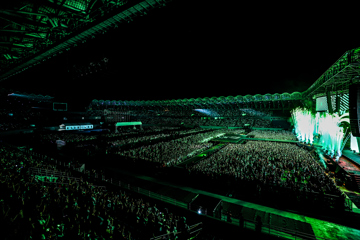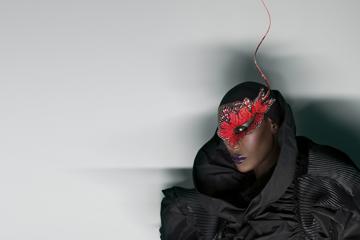REVIEW: Marvel Does What It Does Best With 'Captain Marvel'
'Action sequences, a genuine sense of humour and two hours of excellent time killing entertainment.'
CAPTAIN MARVEL
★★★
WARNING: Potential spoilers ahead!
Captain Marvel is the first MCU movie to feature a standalone female lead. The first MCU movie to be directed — by co-director Anna Boden, working with longtime partner Ryan Fleck — by a woman. And the first MCU movie to feature a score composed by a woman, Pinar Toprak. Arriving just in time for International Women’s Day, it’s a film that brings bubblegum feminism to the blockbuster box office, out to battle macho comic book tropes and patriarchal naysaying while also setting the table for a film you may have heard of called Avengers: Endgame.
But, beyond that, what is Captain Marvel, really? Not as piece of screen representation and cross-promotion, but as work of cinema? There, its individual identity falls away, and we’re served up something all too recognisable. This is another Marvel movie product that offers what they all do: bright colours, action sequences, a genuine sense of humour, the feeling that you shouldn’t take it too seriously, and two hours of excellent time killing entertainment. It’s fine. 3 stars.
There’s also a ’90s setting, and palpable, giddy delight — from both filmmakers and marketers — at the opportunity to recycle the pop-cultural totems of the recent past. If there’s no nostalgia for Captain Marvel herself — a character that’s never featured in a feature film nor television series — then parents bringing their kids along to this thing can still laugh at Alta Vista searches, slow-loading Windows 95 status bars, scenes set in the fallen chain stores Blockbuster and Radio Shack, and a soundtrack that girl powers its way through jams by Hole, Garbage, Elastica, TLC, Salt-N-Pepa, etc. I was half expecting to hear Generic 90s Grunge Song playing.
Don't miss a beat with our FREE daily newsletter
The film itself delivers deliberate visual echoes of the entertainments of yore, with references to Top Gun (well, yes, this is from the ’80s), Terminator 2, Men In Black, and The Matrix (the late Stan Lee also appears in a cameo, reading a script for Mallrats on a train). There’s also plenty of unintentional resonance with the recent Alita: Battle Angel, as we witness another all-powerful killing machine from another planet navigate both fish-out-of-water comedy and a search for her mysterious identity; each haunted by ghostly, slow-motion memories of being in the middle of a battle fought with alien technology.
In this way, with its search for self discovery, Captain Marvel puts an interesting spin on the origin story. The screenplay — credited to Boden, Fleck, Meg LeFauve, Nicole Perlman, and Geneva Robertson-Dworet — undertakes such with a screenplay that plays with non-linearity. There’s no opening act introduction to the character in their salad days, going through formative and/or transformative experiences. The titular character, played by Brie Larson, already has their super-powers; they just don’t know how they got them. It’s the basic Bourne set-up: the hero who doesn’t remember, surrounded by people who can’t be trusted, clawing towards a moment of revelation that will clarify who they are, to both themselves and the audience.
It opens amongst the Kree people — last seen as the blue-skinned villains in Guardians Of The Galaxy — on their planet of Hala. It’s essentially a totalitarian society; one where self-abnegation and sacrifice are lionised, its people (or, at least, its soldiers who say things like “does anyone copy, over?” into comms even though they are a foreign species living in a distant galaxy) living by strict codes of loyalty and state-mandated dogma. In contrast, their rivals, the green-skinned Skrulls, are literal shape shifters, never sticking to a single sharp or form, wandering through the galaxy, occupying different bodies on different planets.
In Kree HQ, Larson and Jude Law trade comic ball-busting banter and get down to some training sequence sparring: she impulsive and full of emotion, he constantly commanding her to not fall pray to her emotions. This is a familiar edict of kung-fu movies — which, echoing the collectivist society, symbolically suggests Hala as China — but here it’s the first echo of a film out to repudiate old-fashioned condescending-male edicts. Those who tell women to not be so emotional, wonder why-don’t-you-give-us-a-smile, or call someone “young lady” all get put back in their place.
Much of the action happens on C53, aka Earth, where Larson crash lands, and soon ends up in a buddy-cop team-up with Samuel L Jackson, digitally “de-aged” and looking like he strolled off the set of Patriot Games in 1992. Here, Captain Marvel pulls origin story double duty: this not just about how Captain Marvel got her powers, but how Nick Fury came to establish the Avengers, and lose an eye. The two of them — and an Inside Llewyn Davis-esque ginger cat — are both on the run from attacking Skrulls and on a journey of discovery, out to find the secrets of alien technology, Larson’s history, and technology once presided over by Annette Benning.
Along the way, this narrative present oft descends, via flashback or dream sequence or Inception-like brain-rummaging technology, into a past of washed-out memories, a mystery waiting to be solved. In either mode, there’s plenty of jokes, Ben Mendelsohn playing a Skrull commander with a broad Australian accent, car chases, fight sequences, All-American pro-militarism, and the comic book movie’s sadly obligatory scenes where people make bright CGI energy lasers whoosh out of their hands, perhaps whilst floating. It’s a film that, beyond its long-overdue redressing of institutionalised gender-imbalance, feels wholly familiar; a work turned out by a Marvel system that, these days, is a well-greased machine. From the makers of plentiful pleasing popcorn-movie products comes yet another. One that ends, of course, with a mid-credits ad for Avengers.







